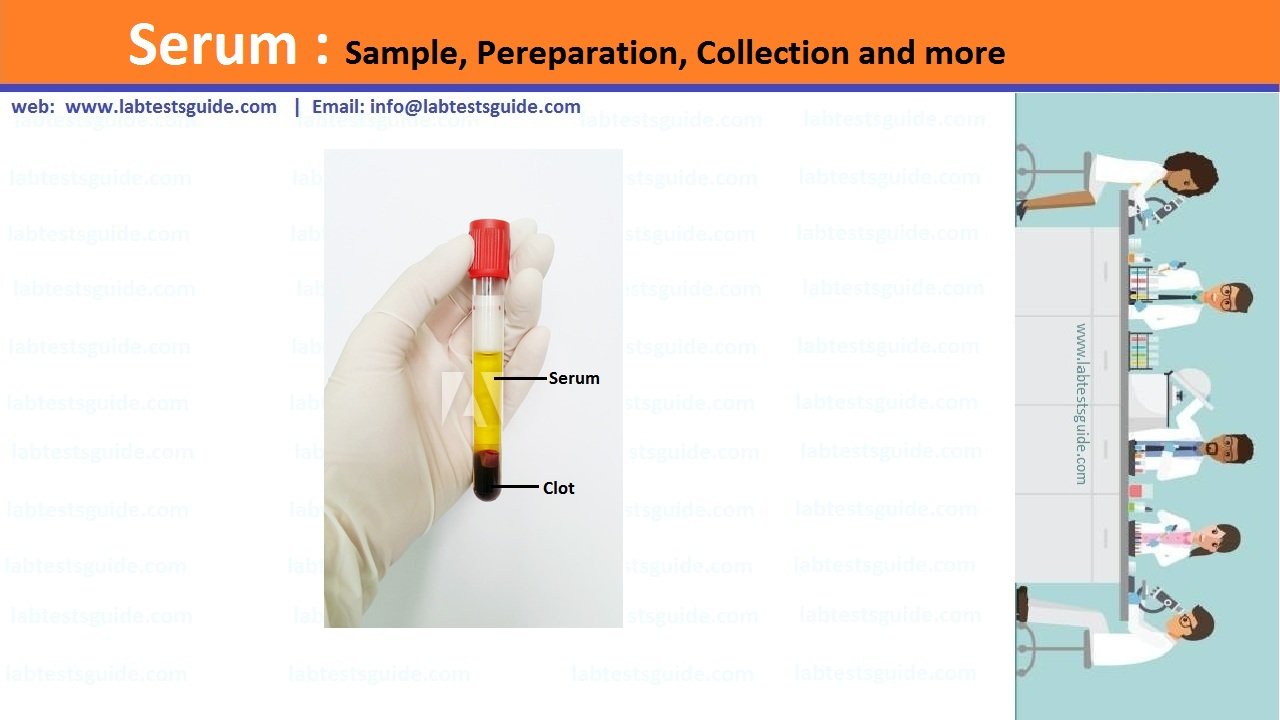In blood, the serum is the fluid and solute component of blood after clotting. It is neither a blood cell (serum does not contain white blood cells– leukocytes, or red blood cells– erythrocytes), nor a clotting factor; it is the blood plasma not including the fibrinogens. Serum includes all proteins not used in blood clotting and all the electrolytes, antibodies, antigens, hormones, and any exogenous substances (e.g., drugs and microorganisms).

- Serum Received from Clotted Blood.
- Plasma Received from anticoagulant blood
Serum preparation
After collection of the whole blood, allow the blood to clot by leaving it undisturbed at room temperature. This usually takes 15–30 minutes. Remove the clot by centrifuging at 1,000–2,000 x g for 10 minutes in a refrigerated centrifuge.
The resulting supernatant is designated serum. By using a Sorvall RC3C Centrifuge, complete the centrifugation process. Afterwards, it is important to immediately transfer the liquid component (serum) into a clean polypropylene tube using a Pasteur pipette. The samples should be maintained at 2–8°C while handling. If the serum is not analyzed immediately, the serum should be apportioned into 0.5 ml aliquots, stored, and transported at –20°C or lower. It is important to avoid freeze-thaw cycles because this is detrimental to many serum components. Samples which are hemolyzed, icteric or lipemic can invalidate certain tests.
Specimen Containers
- Red-top tube: Contains no anticoagulant or preservative.
- Mottled red/gray-top, gold-top, or cherry red-top (gel-barrier) tube: Contains clot activator and gel for separating serum from cells, but not anticoagulant. Do not use gel-barrier tubes to submit specimens for therapeutic drug monitoring. Always check the test description to determine whether a gel-barrier tube is acceptable.
- Lavender-top tube: Contains K2 EDTA.
- Gray-top tube: Contains sodium fluoride (a preservative) and potassium oxalate (an anticoagulant).
- Blue-top tube (also light blue-top tube): Contains sodium citrate. Be sure to use only tubes with a 3.2% sodium citrate concentration. These are easily identified by the yellow diagonal stripes on the label.
- Green-top tube: Contains sodium heparin or lithium heparin.
- Yellow-top tube: Contains acid citrate dextrose (ACD) solution.
- Royal blue-top tube: Contains sodium EDTA for trace metal studies. Some royal blue-top tubes do not contain EDTA.
- Tan-top tube: Contains sodium EDTA for blood lead analysis.
- Plasma Preparation Tube (PPT™): Contains EDTA.
Possible References Used





0 Comments